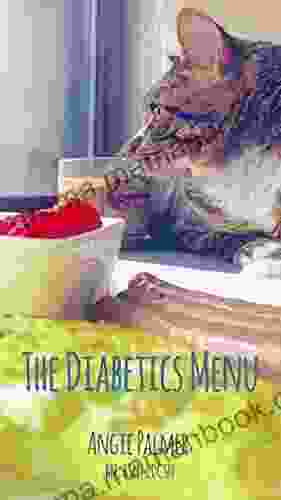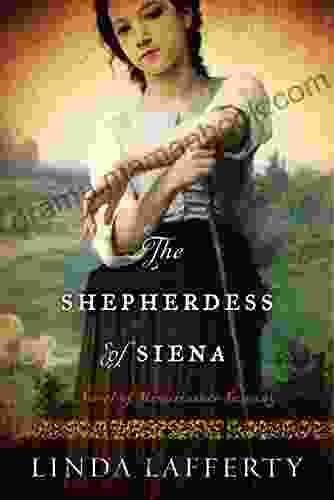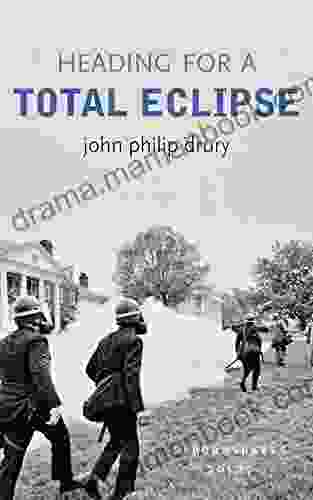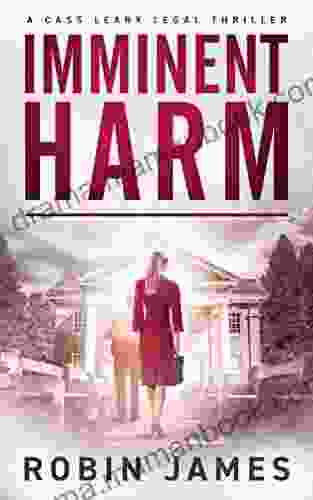What Do We Teach Readers Tomorrow? Nonfiction for Grades K-12

In a world awash in information, it is more important than ever to teach students how to read, understand, and evaluate nonfiction texts. Nonfiction texts provide students with the knowledge and skills they need to succeed in school, college, and careers. They also help students develop critical thinking skills, problem-solving skills, and a deep understanding of the world around them.
The Common Core State Standards (CCSS) for English Language Arts and Literacy place a strong emphasis on nonfiction reading. The CCSS require students to read a variety of nonfiction texts, including informational texts, literary nonfiction, and technical texts. Students must be able to understand the main ideas and supporting details of nonfiction texts, as well as the author's purpose and perspective.
4.2 out of 5
| Language | : | English |
| File size | : | 52690 KB |
| Text-to-Speech | : | Enabled |
| Screen Reader | : | Supported |
| Enhanced typesetting | : | Enabled |
| Word Wise | : | Enabled |
| Print length | : | 295 pages |
Teaching nonfiction reading can be challenging, but it is also rewarding. By providing students with the tools and strategies they need to succeed, teachers can help them become lifelong learners who are able to navigate the world of information with confidence.
What is Nonfiction?
Nonfiction is a type of writing that is based on facts and real events. It can be about any topic, from history to science to biography. Nonfiction texts can be written in a variety of styles, including expository, narrative, and persuasive.
Expository nonfiction texts explain or inform the reader about a particular topic. They often use facts, statistics, and examples to support their claims. Narrative nonfiction texts tell a story about real events. They may use literary devices, such as plot, character, and setting, to engage the reader.
Persuasive nonfiction texts try to convince the reader to agree with the author's point of view. They often use evidence, logic, and emotion to support their arguments.
Why is it Important to Teach Nonfiction?
There are many reasons why it is important to teach nonfiction. First, nonfiction texts provide students with the knowledge and skills they need to succeed in school, college, and careers. Nonfiction texts are the primary source of information in many fields, such as science, history, and social studies. Students who are able to read and understand nonfiction texts are better prepared for success in these fields.
Second, nonfiction texts help students develop critical thinking skills. When students read nonfiction texts, they must be able to understand the main ideas and supporting details of the text. They must also be able to evaluate the author's purpose and perspective. This process of critical thinking helps students develop the skills they need to make informed decisions.
Third, nonfiction texts help students develop a deep understanding of the world around them. Nonfiction texts can teach students about different cultures, different time periods, and different scientific discoveries. This knowledge can help students develop a more informed and nuanced understanding of the world.
How to Teach Nonfiction
There are many different ways to teach nonfiction. The best approach will vary depending on the age and ability level of your students. However, there are some general tips that you can keep in mind when teaching nonfiction:
- Start with the basics. Before you can teach students how to read and understand nonfiction texts, you need to make sure that they have a solid foundation in reading skills. This includes the ability to decode words, understand vocabulary, and comprehend sentences.
- Provide students with background knowledge. Before students read a nonfiction text, it is important to provide them with some background knowledge about the topic. This will help them to understand the context of the text and to make connections to their own prior knowledge.
- Use a variety of teaching methods. There are many different ways to teach nonfiction. Some effective methods include:
- Read-alouds: Reading aloud to students is a great way to introduce them to different types of nonfiction texts. It can also help them to develop fluency and comprehension skills.
- Shared reading: Shared reading is a strategy in which the teacher and students read a text together. The teacher models good reading strategies and helps students to understand the text.
- Guided reading: Guided reading is a strategy in which the teacher provides students with support as they read a text. The teacher may ask questions, provide clarification, and help students to make connections to their own prior knowledge.
- Independent reading: Independent reading is an important way for students to develop their reading skills. Students should be given time to read nonfiction texts on their own.
- Use graphic organizers. Graphic organizers can help students to visualize and understand the information in nonfiction texts. Some common graphic organizers include:
- Web diagrams: Web diagrams can be used to show relationships between different concepts.
- Flow charts: Flow charts can be used to show the steps in a process.
- Timelines: Timelines can be used to show the order of events.
- Assess student learning. It is important to assess student learning on a regular basis to ensure that they are understanding the material. There are many different ways to assess student learning, including:
- Quizzes: Quizzes can be used to assess student understanding of the main ideas and supporting details of a text.
- Essays: Essays can be used to assess student understanding of a topic and their ability to write clearly and concisely.
- Projects: Projects can be used to assess student understanding of a topic and their ability to apply their knowledge to new situations.
Teaching nonfiction is an important part of preparing students for success in school, college, and careers. By providing students with the tools and strategies they need to succeed, teachers can help them become lifelong learners who are able to navigate the world of information with confidence.
4.2 out of 5
| Language | : | English |
| File size | : | 52690 KB |
| Text-to-Speech | : | Enabled |
| Screen Reader | : | Supported |
| Enhanced typesetting | : | Enabled |
| Word Wise | : | Enabled |
| Print length | : | 295 pages |
Do you want to contribute by writing guest posts on this blog?
Please contact us and send us a resume of previous articles that you have written.
 Top Book
Top Book Novel
Novel Fiction
Fiction Nonfiction
Nonfiction Literature
Literature Paperback
Paperback Hardcover
Hardcover E-book
E-book Audiobook
Audiobook Bestseller
Bestseller Classic
Classic Mystery
Mystery Thriller
Thriller Romance
Romance Fantasy
Fantasy Science Fiction
Science Fiction Biography
Biography Memoir
Memoir Autobiography
Autobiography Poetry
Poetry Drama
Drama Historical Fiction
Historical Fiction Self-help
Self-help Young Adult
Young Adult Childrens Books
Childrens Books Graphic Novel
Graphic Novel Anthology
Anthology Series
Series Encyclopedia
Encyclopedia Reference
Reference Guidebook
Guidebook Textbook
Textbook Workbook
Workbook Journal
Journal Diary
Diary Manuscript
Manuscript Folio
Folio Pulp Fiction
Pulp Fiction Short Stories
Short Stories Fairy Tales
Fairy Tales Fables
Fables Mythology
Mythology Philosophy
Philosophy Religion
Religion Spirituality
Spirituality Essays
Essays Critique
Critique Commentary
Commentary Glossary
Glossary Bibliography
Bibliography Index
Index Table of Contents
Table of Contents Preface
Preface Introduction
Introduction Foreword
Foreword Afterword
Afterword Appendices
Appendices Annotations
Annotations Footnotes
Footnotes Epilogue
Epilogue Prologue
Prologue Antonin Scalia
Antonin Scalia Sam Sykes
Sam Sykes Bruce Henderson
Bruce Henderson Phil Wall
Phil Wall Donald R Bear
Donald R Bear Todd Miller
Todd Miller Jessica Day George
Jessica Day George Nashoda Rose
Nashoda Rose Jennifer Jones
Jennifer Jones David Grayson
David Grayson Dr Joseph S Maresca
Dr Joseph S Maresca Francesco Sedita
Francesco Sedita Travis Mays
Travis Mays Ryan Engel
Ryan Engel Richard Moskowitz
Richard Moskowitz Tonya Coffey
Tonya Coffey David Chill
David Chill Kim Kiker Painter
Kim Kiker Painter Mary Kay Andrews
Mary Kay Andrews John Dewey
John Dewey
Light bulbAdvertise smarter! Our strategic ad space ensures maximum exposure. Reserve your spot today!

 Dalton FosterTravels Among the New Greek Ruins: Uncovering the Hidden Treasures of a Lost...
Dalton FosterTravels Among the New Greek Ruins: Uncovering the Hidden Treasures of a Lost...
 Jan MitchellAdventures in Contentment: A Journey to Find True Fulfillment in the Simple...
Jan MitchellAdventures in Contentment: A Journey to Find True Fulfillment in the Simple... Jason ReedFollow ·9.5k
Jason ReedFollow ·9.5k Bret MitchellFollow ·15.2k
Bret MitchellFollow ·15.2k Ismael HayesFollow ·16.5k
Ismael HayesFollow ·16.5k Scott ParkerFollow ·18.2k
Scott ParkerFollow ·18.2k Andres CarterFollow ·17.6k
Andres CarterFollow ·17.6k Pete BlairFollow ·10.3k
Pete BlairFollow ·10.3k Josh CarterFollow ·15k
Josh CarterFollow ·15k Jace MitchellFollow ·18.2k
Jace MitchellFollow ·18.2k

 Jesus Mitchell
Jesus MitchellThe Diabetics Menu: Your Low Carb Options
If you're living with diabetes, you may be...

 Danny Simmons
Danny SimmonsThe Sam Reilly Collection: A Treasure Trove of...
In the realm of...

 Vic Parker
Vic ParkerThe Shepherdess of Siena: The Extraordinary Life of Saint...
Catherine of Siena, known as the...

 Christian Carter
Christian CarterDive into the Mystical World of Meraki Syren: A Literary...
A Literary Odyssey Through the Depths...

 Eric Hayes
Eric HayesSimplest Method on How to Remove Credit Cards from Your...
Do you have multiple credit cards...
4.2 out of 5
| Language | : | English |
| File size | : | 52690 KB |
| Text-to-Speech | : | Enabled |
| Screen Reader | : | Supported |
| Enhanced typesetting | : | Enabled |
| Word Wise | : | Enabled |
| Print length | : | 295 pages |









